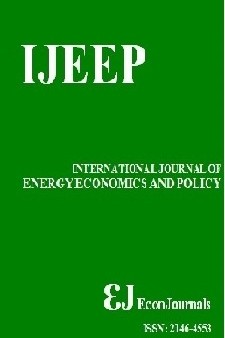Production Factors Use in the European Electricity Producing Companies During the Last Financial Crisis
Production Factors Use in the European Electricity Producing Companies During the Last Financial Crisis
In the period from 2009 to 2012, the value added among the eight major European electricity producing companies on average oscillated around the stagnated trend. Between these companies there were large differences in organizational structure and technology of electricity production. Labor contributes to value added the most in EDF and Vattenfall, while capital contribution to value added is the greatest in Fortum and above average in GEN, Enel and CEZ. From 2009 to 2012 the contribution of labor on average increased, and the contribution of capital decreased. The single exception with opposite changes in production factors' contribution was Enel. Total factor productivity is greatest in RWE, and this company improves it even at the cost of a decline in value added, employment and assets. At the other end from 2009 to 2012 EDF and Enel increased their total factor productivity connected with value added growth. In terms of labor and capital engagement the European electric energy producing company adapts to the market. The elasticity of labor employment on final electricity consumption is 0.5, on the price of this energy for industrial use is 0.3, and on the labor costs per employee is -0.2. The elasticity of capital (assets) engagement is 0.8 on final electricity consumption, and 0.5 on the prices of electricity for industrial use (total Eurogroup).
Keywords:
industrial organization electric utilities, energy, energy companies, international comparision,
- Başlangıç: 2011
- Yayıncı: İlhan ÖZTÜRK
Sayıdaki Diğer Makaleler
Daniel Alejandro Sanchez-Loor, Manuel A. Zambrano-Monserrate
Nuclear Energy Consumption and Growth Nexus in G-6: Evidence from Bootstrap Rolling Window
Metropolitan Econometric Electric Utility Forecast Accuracy
Thomas M. Fullerton, George Novela, David Torres, Adam G. Walke
José BALİBREA-INİESTA, Antonio SÁNCHEZ-SOLİÑO, Antonio LARA-GALERA
France Krizanic, Zan Jan Oplotnik, Vasja Kolsek, Alenka Kavkler
Energy Efficiency in Rent Seeking Economies:Is Credit Capable of Breaking the Energy Curse?
Texas Interconnection Grid: Economic Optimal Capacity Utilization Rate Evidence
Influencing Factors Promoting Technological Innovation in Renewable Energy
Nnaemeka Vincent EMODİ, Ganzorig SHAGDARSUREN, Abdissa Yilma TİKY
